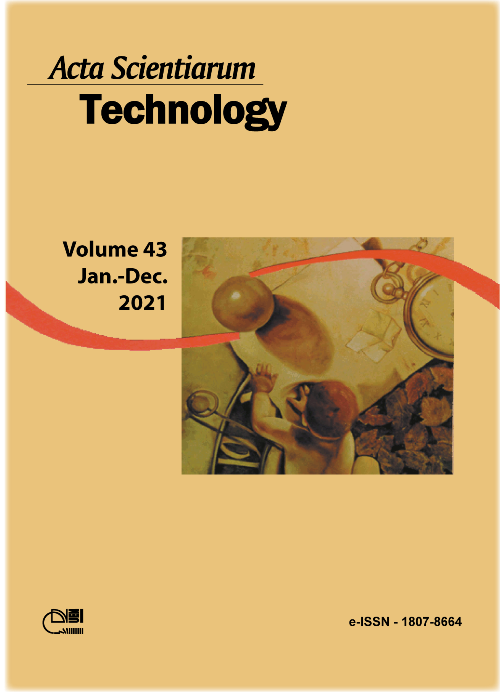In vitro effects of an Acanthophora muscoides (Ceramiales, Rhodophyta) native and modified sulfated polysaccharide fraction on thrombin generation
DOI:
https://doi.org/10.4025/actascitechnol.v43i1.49082Keywords:
anionic polymers; chemical modification; plasma systems; thrombosis.Abstract
The structural complexity of the agaran type-sulfated polysaccharides (SPs) found in Acanthophora muscoides limits its investigation as anticoagulant alternative to heparin which induces clot complications. This study was extended to evaluate the properties of a SPs fraction and its alkali/desulfated derivatives on an intrinsic pathway-induced thrombin generation (TG) continuous model using 60-fold diluted normal or serpins-depleted human plasma. 0.75 M NaCl-eluted SPs fraction by DEAE-cellulose chromatography containing sulfate (35.20%), total sugars (55.97%) and no proteins showed charge homogeneity and heterogeneous molecular weight by agarose/polyacrylamide gel electrophoresis, respectively, using sequential staining with toluidine blue and Stains-All. Fourier Transform Infrared spectroscopy confirmed agaran-structure. Intact fraction poorly acted on the activated partial thromboplastin time (3.10 IU) than heparin (193 IU), but there was a preponderance of the serpin-independent effect than serpin-dependent one in TG assay comparing both systems was continually recorded. Heparin abolished plasma TG, but was inactive in depleted human plasma. While desulfated derivative of the respective fraction anticipated and induced thrombin formation vs. untreated plasma. The results suggested that sulfated sugars residues in the sacharide units of the polymer appear to be important to attenuate TG in vitro.
Downloads
Downloads
Published
How to Cite
Issue
Section
License
DECLARATION OF ORIGINALITY AND COPYRIGHTS
I Declare that current article is original and has not been submitted for publication, in part or in whole, to any other national or international journal.
The copyrights belong exclusively to the authors. Published content is licensed under Creative Commons Attribution 4.0 (CC BY 4.0) guidelines, which allows sharing (copy and distribution of the material in any medium or format) and adaptation (remix, transform, and build upon the material) for any purpose, even commercially, under the terms of attribution.
Read this link for further information on how to use CC BY 4.0 properly.











8.png)




